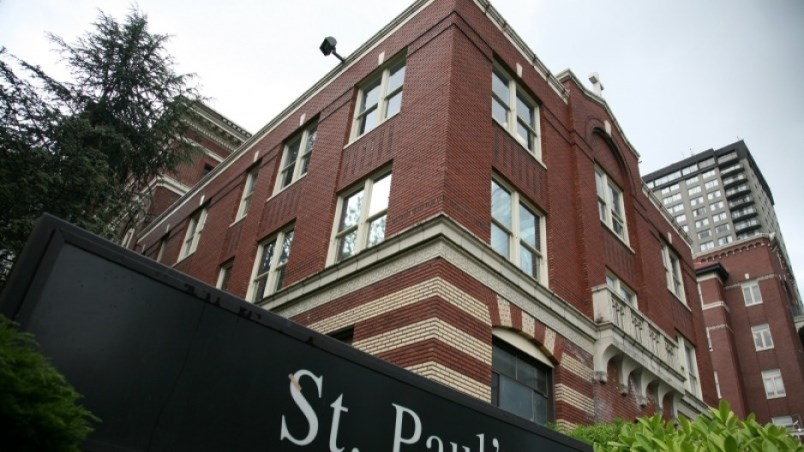The government isn’t definite on the cost of the machine, however, pegging its price between $2 million and $3 million.
Nor is other information freely available.
“A full breakdown of costs, which would include such things as overhead, staffing and maintenance is not something that the ministry can provide at this time, and can involve contracts that would have to be accessed via Freedom of Information,” Ministry of Health senior public affairs officer Krystal Thomson said.
The 126-year-old Burrard Street facility is to be replaced with a $1.9 billion replacement on False Creek Flats that is slated to open in 2026, Premier John Horgan said in February 2019.
The machine became operational at the hospital on June 14, the result of an eight-year project in which donors raised $4.1 million of the $6.6 million project cost for a new 3T MRI.
"By having a new 3T MRI at St. Paul's Hospital, we're able to make great strides in cutting down wait lists for people and deliver services faster, better and closer to home," Minister of Health Adrian Dix said.
The announcement fulfils a 2020 NDP election promise.
Asked why so much money would be spent installing a new machine at the old site, PHC spokesman Shaf Hussein said the hospital needs to deliver care until the new one is ready.
“If elevators weren’t working in the new hospital or electrical systems, etc., we’d spend money to ensure they are,” Hussein said. “It’s an aging facility, yes, but it can still have new technology to enable the best care possible; that’s what patients deserve and should get. And it’s likely any of the newer technology that’s in the current hospital (such as this new MRI) would be transferred to the new hospital, where possible, and where it makes most sense for the taxpayer and for patient care.”
Further, the ministry confirmed the machine would be relocated to the new St. Paul’s when construction is complete.
The ministry said the new equipment provides faster scans and better image quality than the hospital's two older machines, both more than 10 years old.
The ministry said the addition would cut wait times for patients.
MRI is considered a gold standard in medical imaging, allowing practitioners see body soft tissue, from ligaments and tendons, to complex regions like the brain, spinal cord and heart. It is widely used in cardiology, neurology, orthopedics, intensive care and other areas to diagnose a range of complex pathologies and conditions.
Another major benefit, the ministry said, is the 3T MRI's application in research, into diseases such as post-COVID-19 syndrome, which may include a range of troubling physical symptoms, such as severe fatigue and increased risk of damage to the heart, lungs and brain; chronic obstructive pulmonary disease, known as COPD; cystic fibrosis; asthma; and pulmonary fibrosis.
"Having access to technology like the 3T MRI is fantastic news for patients," said Spencer Chandra-Herbert, MLA for Vancouver West-End. "We've seen through the past few months dealing with the challenges of COVID-19 how crucial top-of-the-line diagnostics are, and this new MRI will help with advancing research, which is a big win for St. Paul's and for British Columbians."
Another major benefit is the 3T MRI's application in research, into diseases such as post-COVID-19 syndrome, which may include a range of troubling physical symptoms, such as: severe fatigue and increased risk of damage to the heart, lungs and brain; chronic obstructive pulmonary disease, known as COPD; cystic fibrosis; asthma; and pulmonary fibrosis.
The machine's advanced technology enables clinicians and researchers to evaluate not only a patient's lung disease progression, but also the effect of therapy and medications on the disease.
Dr. Jonathon Leipsic, director of medical imaging and regional department head at Vancouver Coastal Health and Providence Health Care, said St. Paul’s performs thousands of MRI scans every year.
“With this 3T magnet, we'll be able to offer more robust imaging of the brain, image for many muscular-skeletal conditions and really innovate in the cardiovascular and cardiopulmonary spaces,’ Leipsic said.
"Our new 3T MRI will provide unique opportunities for research across all body systems but will really transform our capacity to investigate lung and heart conditions, Leipsic said. “The polarized gas program we are setting up will be the first of its kind in Western Canada, providing a powerful tool to pair with the tremendous bench and clinical research emanating from our Centre for Heart Lung Innovation."
Providence Department of Radiology head Dr. Darra Murphy said St. Paul’s looks after some of the most complex cardiac patients in the province.
“Some of our patients require long examinations that take two or three hours, involving multiple breath-holds, which can leave the patient quite exhausted,” Murphy said. “With this technology, we can do single breath-hold imaging that will really transform the quality of the imaging and the patient experience."
New hospital
The new hospital, operated by PHC, is to be situated on a 7.4-hectare (18.4 acre) site on False Creek Flats, bought for $45.5 million through a public-private partnership. It is slated to include state-of-the-art health care, research and teaching facilities.
The hospital’s main building will be an 11-storey, state-of-the-art acute care hospital, while other buildings will house primary care, out-patient and specialty clinics, research programs, health care technology, biomedical and life sciences businesses, and more.
twitter.com/jhainswo



